 |
 |
 |
| |
Among Cirrhotic Patients with a Hepatitis C Sustained Viral Response, the Risk of De-novo Hepatocellular Carcinoma Relates to Baseline Factors and Not the Use of Direct Acting Antivirals: Results from a Nationwide Cohort
|
| |
| |
Reported by Jules Levin
EASL 2017 April 19-23 Amsterdam Netherlands
Hamish Innes
Research Fellow in Epidemiology
Glasgow Caledonian University
Co-authors: Barclay ST, Hayes PC, Fraser A, Dillon J, Stanley A, Bathgate A, McDonald S, Goldberg D, Valerio H, Fox R, Kennedy N, Bramley P and Hutchinson SJ.
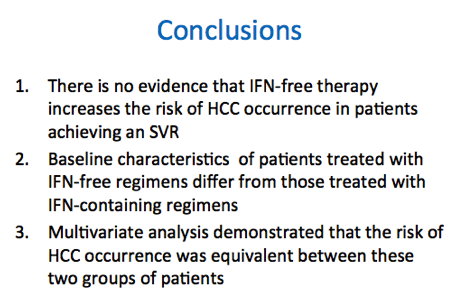
Program Abstract
Among cirrhotic patients with a hepatitis C sustained viral response, the risk of de-novo hepatocellular carcinoma relates to baseline factors and not the use of direct acting antivirals: results from a nationwide cohort
Hamish Innes* 1, Stephen T. Barclay2, Peter C. Hayes3, Andrew Fraser4, John F. Dillon5, Adrian Stanley2, Andy Bathgate3, Scott McDonald1, David Goldberg6, Heather Valerio1, Ray Fox7, Nick Kennedy8, Pete Bramley9, Sharon J. Hutchinson1
1School of Health and Life Sciences, Glasgow Caledonian University, 2Glasgow Royal Infirmary, Glasgow, 3Royal Infirmary Edinburgh, Edinburgh, 4Aberdeen Royal Infirmary, Aberdeen, 5Ninewells Hospital and Medical School, Dundee, 6Health Protection Scotland, 7The Brownlee Centre, Glasgow, 8Monklands Hospital, Lanarkshire, 9Stirling Royal Infirmary, Stirling, United Kingdom
Background and Aims: For chronic hepatitis C (HCV) patients with advanced liver disease, previous studies have reported a high incidence of hepatocellular carcinoma (HCC) after sustained viral response (SVR) attainment with interferon(IFN)-free regimens. Our objective was to verify this phenomenon using data from the Scottish HCV Clinical Database.
Methods: We identified HCC-naive individuals diagnosed with liver cirrhosis who received a course of antiviral therapy in Scotland from 1996-2016 resulting in a SVR. Patients were followed from their treatment start date to the earliest of: date of death, date of HCC occurrence, or July 2016. We used Poisson regression to compare the risk of HCC occurrence according to treatment regimen after adjusting for relevant co-factors (including: socio-demographic factors; baseline liver disease stage; comorbidities/health behaviours, virology, and previous treatment experience). Outcome data on HCC occurrence was ascertained directly from the HCV clinical database and validated against the Scottish Cancer registry. Treatment regimen was categorised as IFN-free versus IFN-containing, and alternatively (as, for instance, 26% of this cohort were treated with IFN in combination with sofosbuvir) as direct-acting-antiviral (DAA)-containing versus DAA-free.
Results: 862 patients met the inclusion criteria, of which 31.8% and 66.0% of patients were treated with an IFN-free and a DAA-containing regimen, respectively. Patient characteristics varied according to the type of regimen received. For instance, receipt of an IFN-free regimen (versus IFN-containing regimen) was associated with: older age; white ethnicity; Child Pugh B/C (versus A); platelet count <150 x109/L(versus≥150); genotype non-3 infection; treatment experience; and higher fibroscan score. Overall, 44 patients developed HCC during a median follow-up of 1.8 years. The unadjusted risk of HCC was significantly higher among individuals treated with an IFN-free regimen versus IFN-containing regimen (IRR: 2.18; P = 0.030). However after multivariate adjustment, this higher risk was fully attenuated (IRR: 0.96, P = 0.929). No significant differences in HCC risk were seen when treatment regimen was alternatively defined in terms of DAA-containing versus DAA-free (see Fig.1). Sensitivity analysis adjusting for HCC-screening attrition did not significantly alter the base-case results.
Conclusions: These findings suggest that the risk of HCC following SVR relates to baseline risk factors and not the use of DAAs.
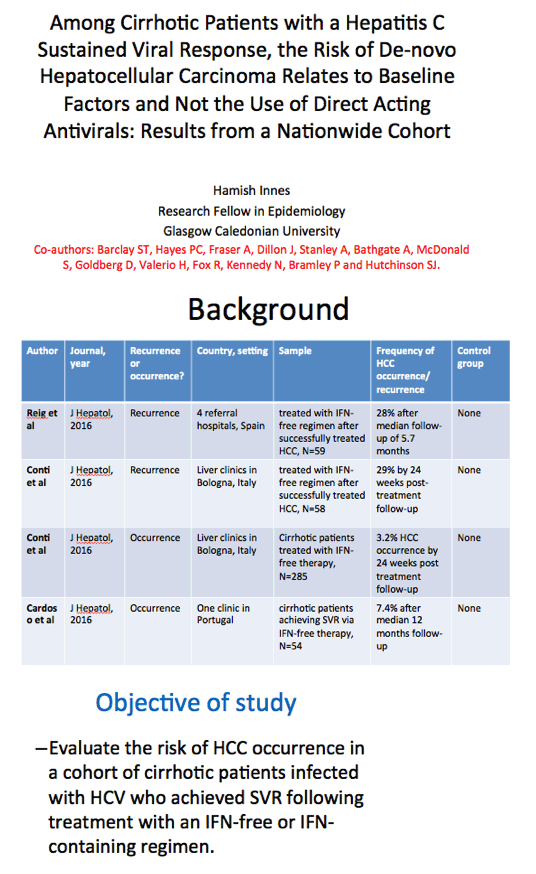
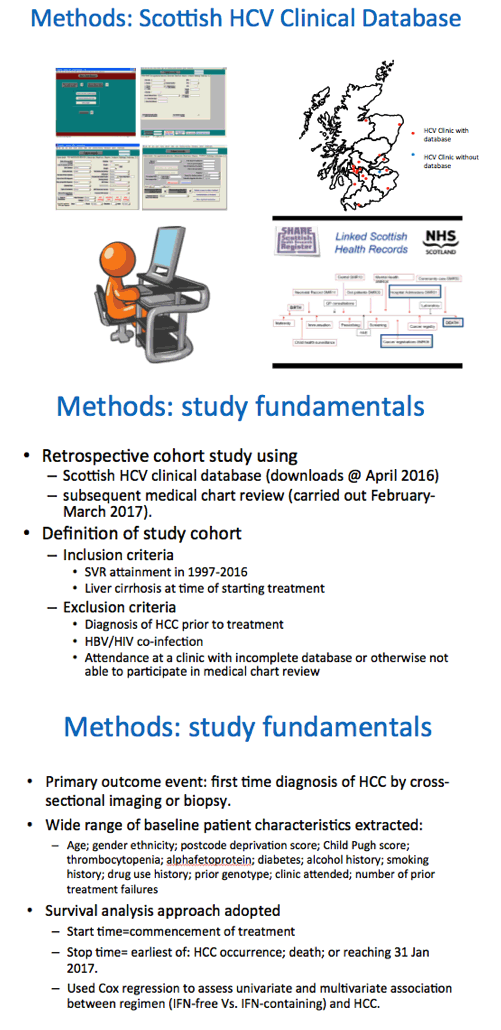
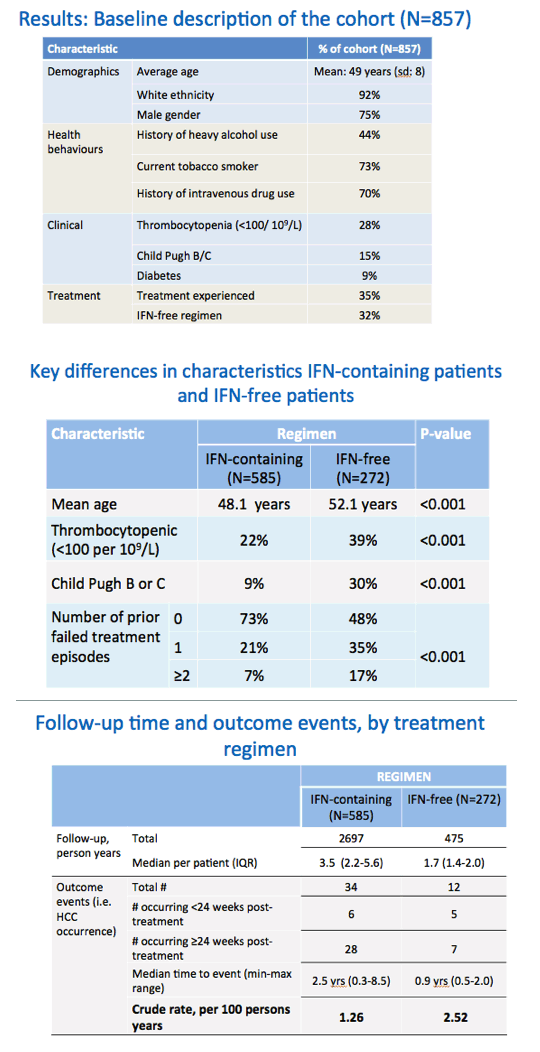
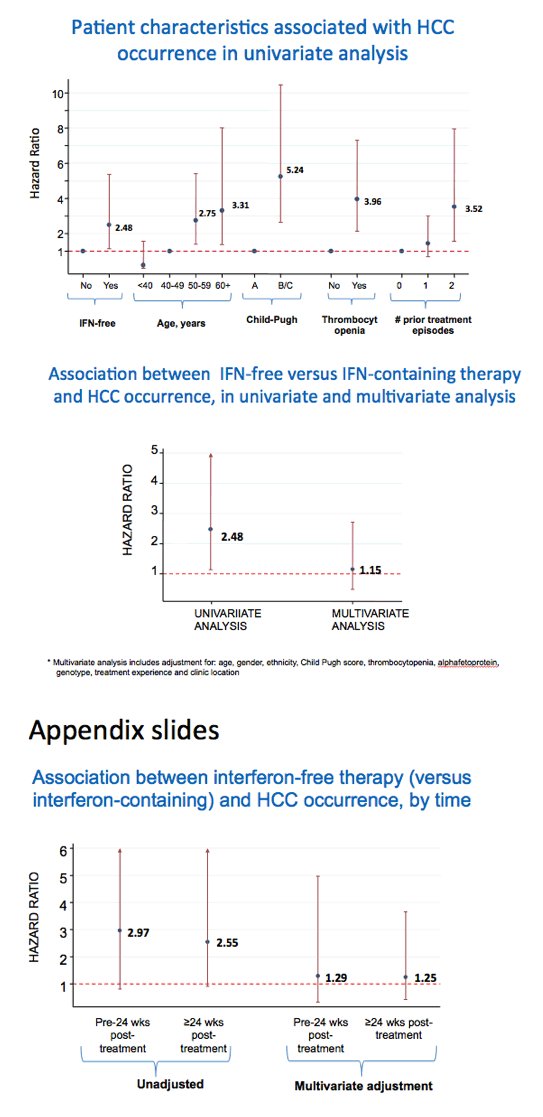
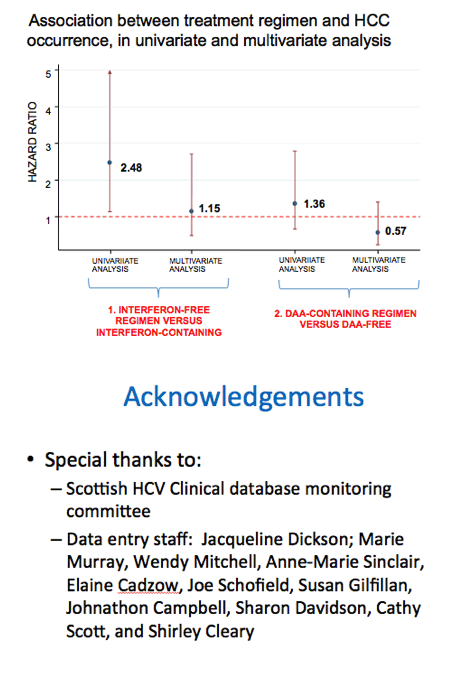
|
| |
|
 |
 |
|
|